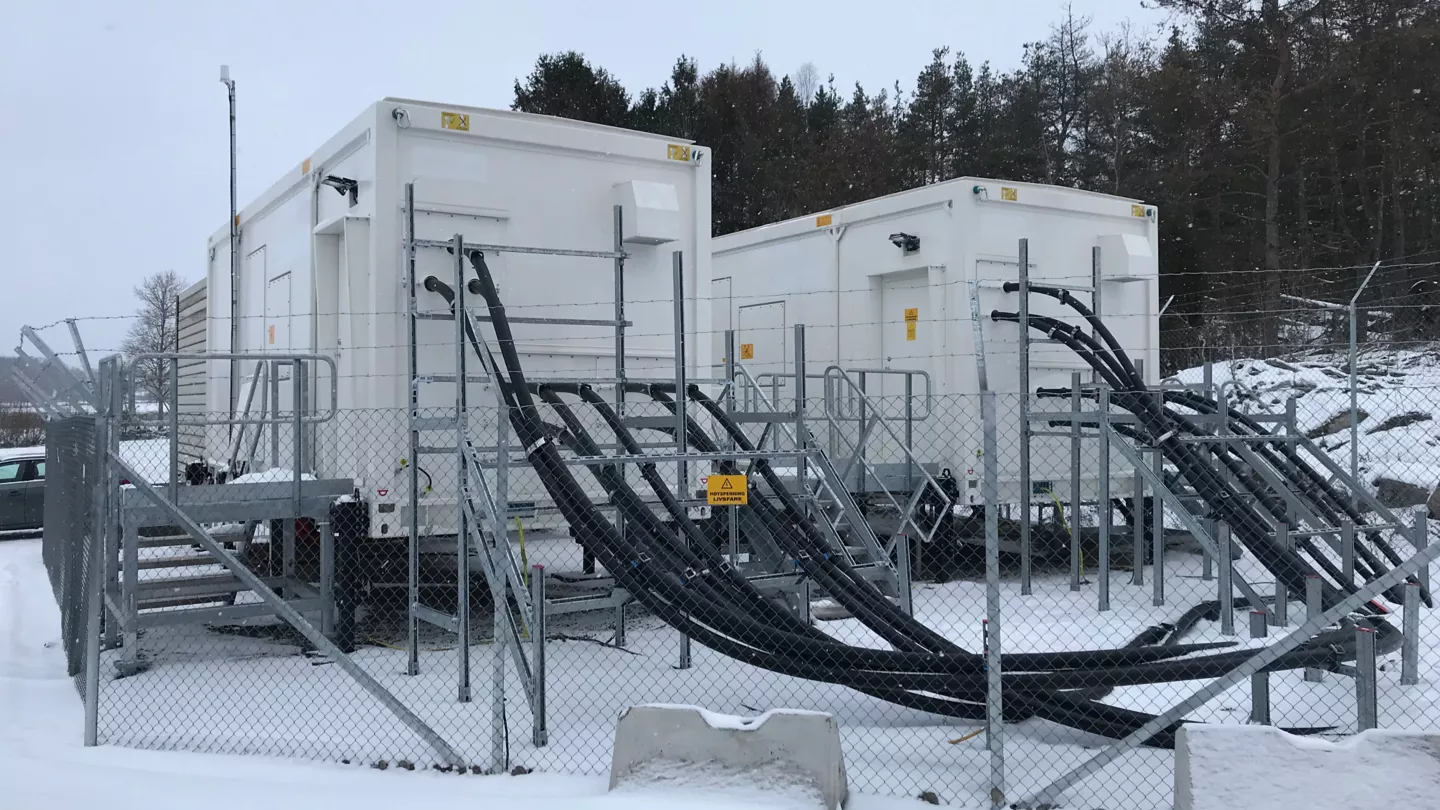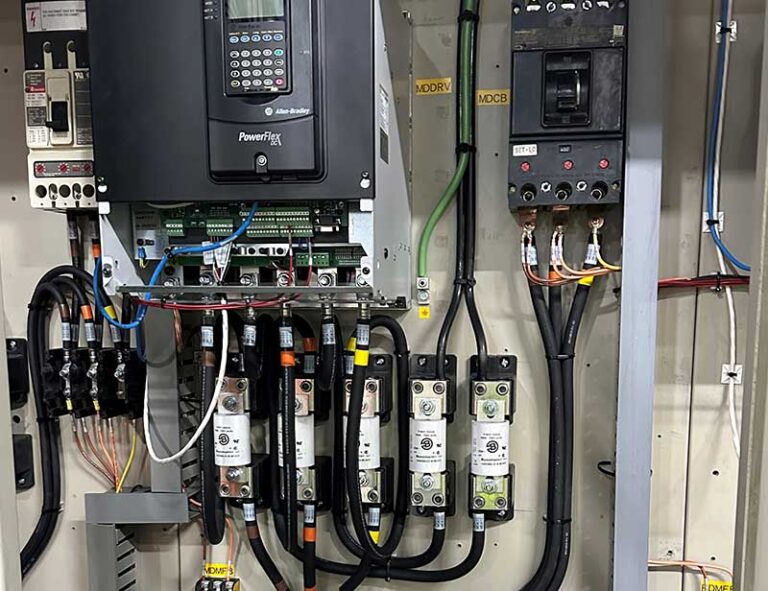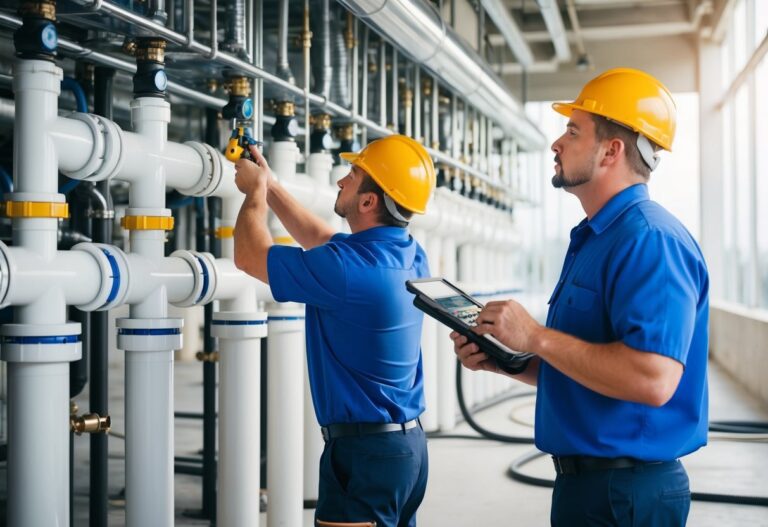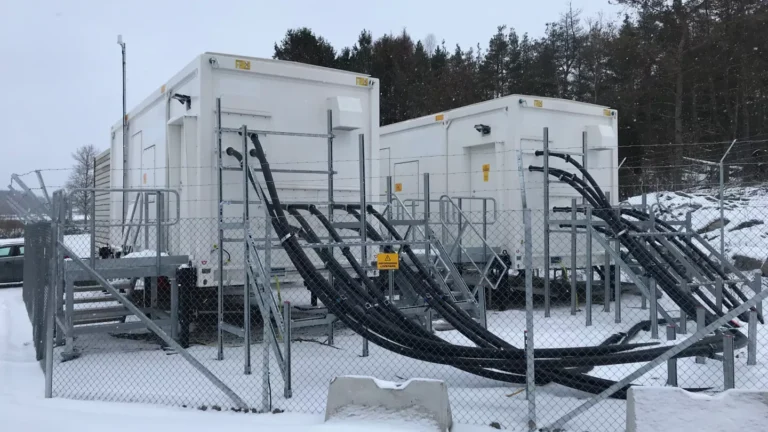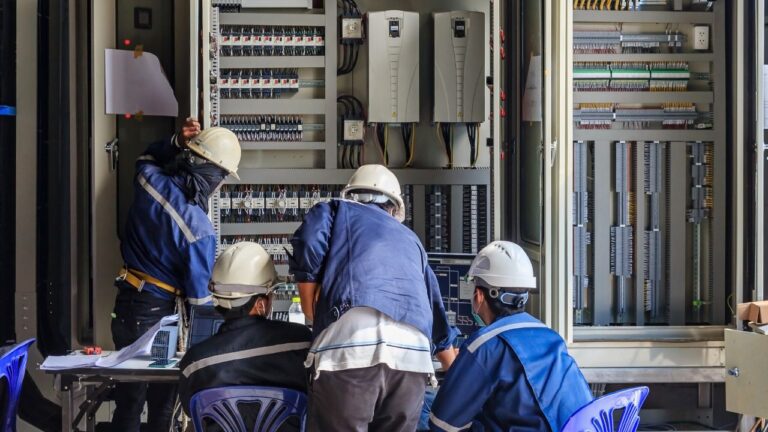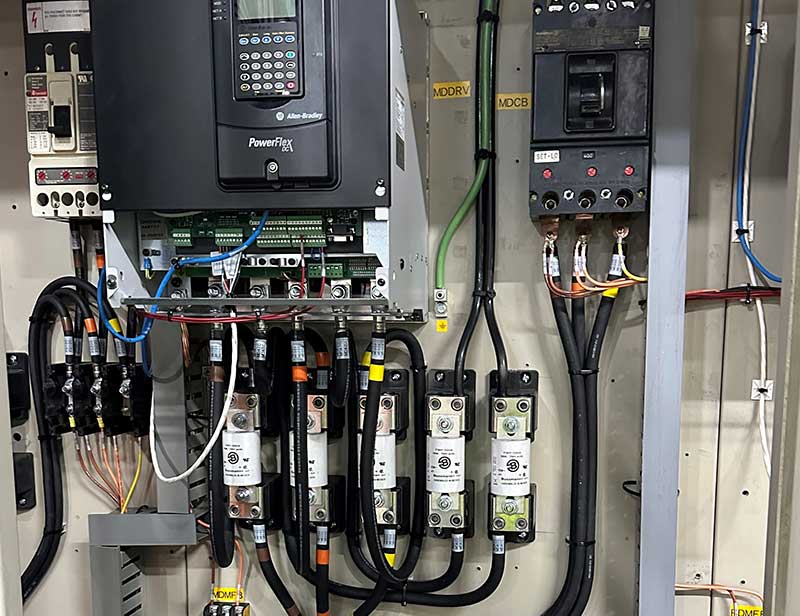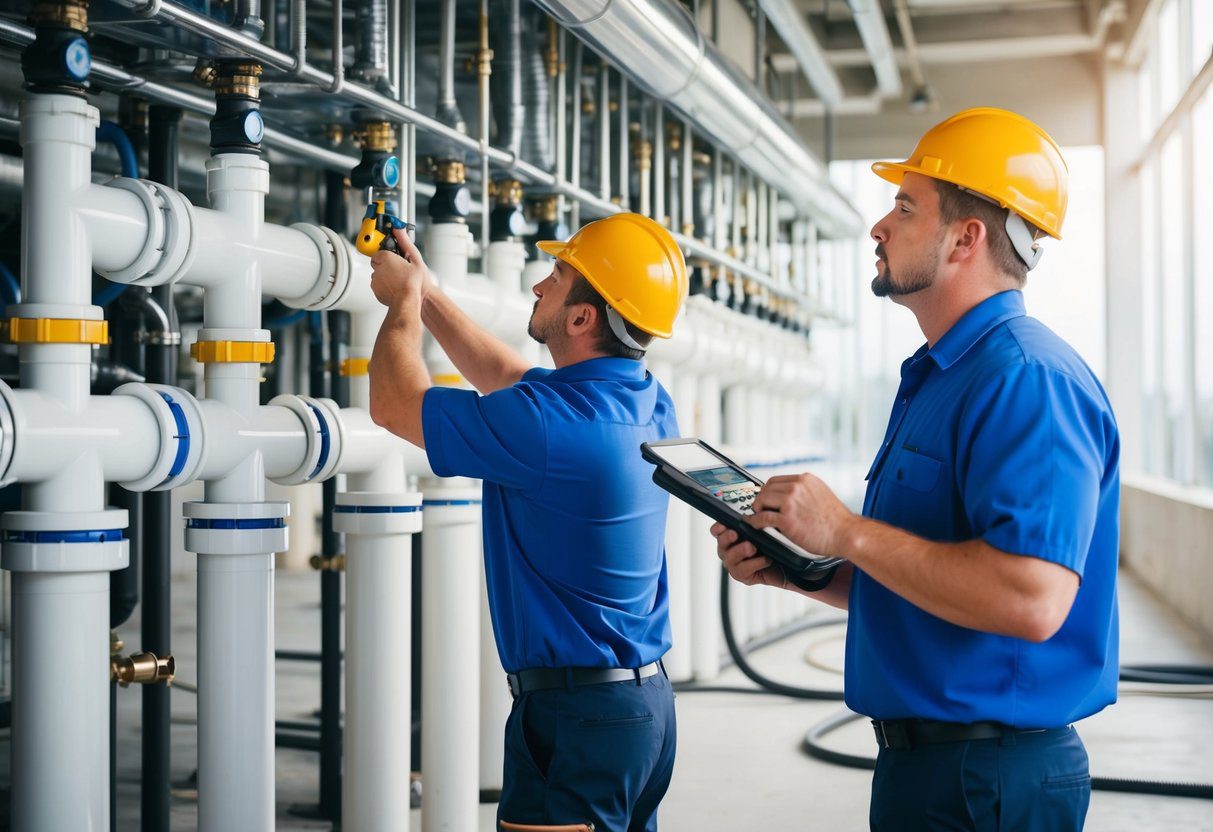For over eighty years, Roman Electric has been the premier electrical partner for commercial and industrial projects across Southeastern Wisconsin. We understand that schedule and budget adherence are paramount for developers, facility managers, and general contractors. Milwaukee’s harsh winters introduce a unique set of challenges. If not managed by an experienced commercial electrical contractor, these can lead to costly delays, safety incidents, and long-term system reliability issues. This guide details the specific impacts of cold weather on commercial construction. It also explains the expert strategies we employ to keep your project on track, regardless of the forecast.
The High-Stakes Impact of Cold on Commercial Electrical Systems
In commercial construction, electrical systems are the backbone of operations. The integrity and performance of these systems are non-negotiable. Milwaukee’s winter, with its sub-zero temperatures, heavy snow loads, and ice, directly threatens this integrity. These challenges differ significantly from residential projects. The scale of commercial work means that a small issue, like a compromised connection, can lead to massive downtime or equipment failure down the line. Thus, proactive planning with a design-build contractor in Wisconsin who understands these risks is critical for project success.
Critical Winter Challenges for Commercial Electrical Construction
1. Material Performance and Handling Logistics
The behavior of common electrical materials changes drastically in the cold, creating significant logistical and installation hurdles.
- Conduit Brittleness: PVC conduits become exceptionally brittle in freezing temperatures. Bending and installing them on a large scale without cracking requires specialized heating tools. Techniques that only experienced commercial electrical contractors possess are needed.
- Conductor Stiffness: The insulation on large-gauge copper and aluminum feeders used in commercial projects stiffens. This increases the force required to pull them through conduit, raising the risk of damaging the insulation. Such damage can create future fault points. Therefore, pre-warming cables in conditioned spaces is a standard part of our cold-weather protocol.
- Battery Failure: Cordless power tools and diagnostic equipment essential for modern construction sites suffer from severely reduced battery life in the cold. We mitigate this with onsite warming stations for tool storage. We also maintain an inventory of backup equipment to prevent work stoppages.
2. Concrete and Grounding System Imperatives
The success of a commercial project often depends on the foundation and grounding, both of which are severely impacted by frost.
- Grounding Electrode Installation: Installing a reliable grounding system for a large facility is a code requirement. When the earth is frozen several feet deep, driving ground rods to the required depth becomes nearly impossible. This can result in a resistance value that is too high. We employ professional-grade ground rod drivers and often use chemical backfill compounds to achieve compliant results in frozen conditions.
- Concrete Embedments: Pouring concrete for equipment pads or to set anchor bolts for switchgear, transformers, and panelboards requires strict temperature control. Electrical crews must coordinate closely with concrete teams to ensure pours are protected with insulated blankets and heating systems. This ensures proper curing and prevents future structural shifts that could damage electrical conduits and connections.
3. Workforce Safety and Productivity Management
Maintaining a safe and productive workforce is a top priority and a major challenge in winter.
- OSHA Compliance: We implement stringent cold stress prevention programs, including mandatory heated break areas, shortened work rotations, and moisture-wicking base layers under FR (Flame-Resistant) clothing. Slippery surfaces on scaffolding and elevated work platforms demand enhanced fall protection measures.
- Decreased Dexterity: Layers of protective clothing and thick gloves reduce dexterity. This makes precise terminations and complex wiring more difficult and time-consuming. Consequently, our project managers build these productivity adjustments into the schedule to maintain realistic timelines.
The Roman Electric Approach: Mitigating Winter Risk for Commercial Clients
We don’t just react to the weather; we engineer solutions to overcome it. Our strategy is built on three pillars:
1. Pre-Fabrication & Enclosure Strategies
To minimize weather-exposed work, we pre-fabricate assemblies in our climate-controlled warehouse. We build complete conduit racks, wire and terminate distribution panels, and assemble control cabinets off-site. These components are then delivered and installed quickly. This practice drastically reduces time spent in the elements and ensures the highest quality of workmanship.
2. Advanced Project Planning and Phasing
As a design-build contractor in Wisconsin, we integrate weather planning from the very first blueprint. We phase projects to prioritize:
- Underground and Exterior Work: Completing all underground conduit, feeder pulls, and exterior installations before deep frost sets in.
- Interior Build-Outs: Scheduling interior rough-ins and finish work during the coldest months. Temporary heating can be used to create ideal working conditions during this time.
3. Technical Solutions and Cold-Weather Specs
We specify materials designed for durability in the Midwest climate:
- Cold-Weather Wire: Using THHN/THWN-2 wire with a lower temperature rating.
- Weatherproof Enclosures: Specifying NEMA 4 and NEMA 4X rated enclosures for all outdoor equipment to protect against moisture and ice.
- Heated Cabinets: Installing thermostatically controlled strip heaters in exterior panels and cabinets to prevent condensation. Condensation is a primary cause of corrosion and failure.
Ensuring Safety and Compliance on the Winter Job Site
Safety is our absolute priority. Beyond personal safety, we focus on electrical safety and quality assurance.
- Moisture Mitigation: We use industrial-grade moisture absorbers and sealing techniques to keep connection points dry during installation. These measures are taken before enclosures are sealed.
- Torque Verification: Due to thermal contraction and expansion, we perform multiple torque checks on critical connections. As temperatures fluctuate, these checks ensure connections remain within manufacturer specifications.
- System Testing: Before energization, we conduct rigorous insulation resistance (megger) testing. This process helps identify any insulation damage that may have occurred during cold-weather installation, preventing future failures.
Partner with a Contractor Built for Wisconsin Winters
Choosing an electrical partner with proven experience in cold weather construction in WI is not just a convenience—it’s a critical business decision. This choice protects your investment, your timeline, and your team.
Roman Electric brings the local expertise, specialized equipment, and meticulous processes necessary to navigate Milwaukee’s winters successfully. We ensure your commercial electrical infrastructure is installed correctly and reliably, designed to perform for decades to come.
Don’t let winter dictate your project’s timeline. Contact Roman Electric today to discuss our commercial electrical construction services. Learn how our cold-weather execution plan can bring certainty to your next project.

